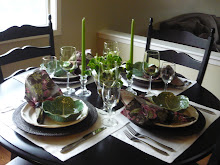Our old Dodge Caravan, affectionately known to us as Moby Dick, the great white whale, because it was huge, and, well . . . white, has finally gone to that big ocean in the sky, or wherever it is old, beat up, seriously used
whales . . . er, vehicles go after they've completed their run. Here's a farewell shot taken with my phone as I said good bye . . .
Moby Dick never carried strollers, or wheel chairs, as our previous minivan did. Instead it carried our children through the teen years, taught them how to drive, and moved my son to college and back many times. It took me to work for a decade and was a comfortable ride for the long commute, albeit, a mite expensive. It also hauled a lot of construction material: Cement board, lumber, cabinets, floor tile . . . Its roof bore the scratches of many Christmas trees . . . Happy memories . . .
But! Here's my new love: Our brand new Toyota Rav4. It has all the bells and whistles. My favorite new feature is power adjustable driver's seat with two settings, one for me and another one for my much taller husband . . . bliss!
Yup. It was a thing of beauty . . . for exactly 3 days . . . Then I took it to work, where a tow truck proceeded to take a bite out of it in the parking lot, all while I was working and minding my own business . . . Arghh!
I'm taking it to the body shop tomorrow morning to have them fix it. Thankfully, the damage was not extensive. (Sigh!) I just didn't expect to have to deal with repairs so soon!
We have a tradition in our family of naming our cars after literary characters, beginning with my father's 1970 (or 71?) Chrysler Plymouth Fury III, which we called “Rocinante” because it plodded along, just like Don Quixote's horse. From the first, The Raven seemed like the obvious choice for the new car: Raven . . . Rav4, the words were so similar . . . But Edgar Allan Poe's poem is so dark that I thought to wait a little longer to make sure the name fit such a pretty car . . .
And then, almost prophetically, the accident happened. I suddenly recalled that Poe said that the raven was meant to symbolize “mournful and never-ending remembrance.” Clearly, this is something that I'm not likely to forget. No matter how good a job the body shop does, and even if no one can tell that the car was hit, I'll know. It will never be the quite the same again . . . nevermore.
The Raven it is . . . but I still just love this car! It rides beautifully, uses less gas, and I feel hugged by the comfortable seat and smart interior. Toyota does a great job of laying out the interior features. I can't wait to take it on a long road trip! This Raven is gonna fly, baby!




































































